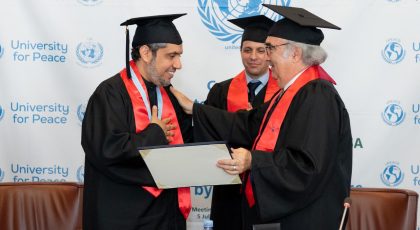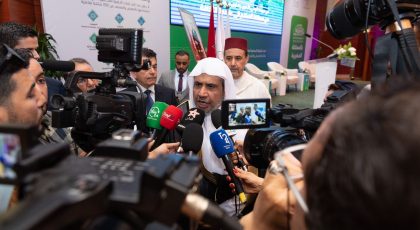
For many years, the people of Somalia have suffered from multiple and successive humanitarian crises such as drought and floods, as well as the negative effects of the conflict, which led to the collapse of most of the infrastructure.
The situation worsened after the Somali economy, which depends mainly on the pastoral and agricultural sectors, was subjected to violent shocks in 2020, which contributed to the deterioration of the humanitarian situation in the country.
Floods caused by climate variability destroyed 144,000 hectares of agricultural land and displaced 919,000 people in 2020, according to the United Nations Office for the Coordination of Humanitarian Affairs.
Meanwhile, Somalia has seen the worst desert locust infestation in 25 years, destroying large swathes of farmland and damaging a lot of pastures, causing a severe food crisis.

Corona pandemic effect
With the spread of the Corona virus in 2020, food consumption levels decreased by 18% in urban areas of Somalia, while the income of about 70% of families decreased in conjunction with the increase in food and water prices, according to the Office for the Coordination of Humanitarian Affairs.
While access to health services decreased by 41.6% after the outbreak of the pandemic, 30% of small and medium-sized businesses in Somalia were affected.
Drought effects
As for the drought that swept some areas in Somalia, it made 3.5 million people in need of food, and caused the displacement of 389,000 people in 2021, according to the United Nations Children’s Fund “UNICEF”.
According to the United Nations Office for the Coordination of Humanitarian Affairs, more than 2.7 million people across Somalia are food insecure.
UNICEF estimates that 1.2 million children under the age of five will suffer from acute malnutrition by the end of this year, and there are 3,900,000 children in urgent need of humanitarian assistance.
The role of the Muslim World League in Somalia
Amid these difficulties, the Muslim World League in Somalia is working in about seven major cities within four states, to mitigate and reduce the cumulative negative effects of conflict and drought by providing immediate life-saving aid in conjunction with long-term sustainable development programs.
The Muslim World League, through its main relief programs, targets vulnerable groups in rural and remote areas and camps for displaced people who are deprived of health and education services and where food insecurity is high, as well as the difficulty of accessing clean water and sanitation.
Due to the exacerbation of the basic needs of citizens, the Muslim World League focused its efforts on providing healthy food to vulnerable groups, and supporting small projects in the agricultural and entrepreneurship sectors. And the construction of drinking water and irrigation tanks to avoid famine disaster in the country.

Orphans Care Program
The Muslim World League, through its oldest programs, aims to improve the social status of children and help them by providing cash financial support to their families in order to meet their basic needs, cover education expenses, and memorize the Holy Quran.
Education
While the majority of children in Somalia lack primary education due to extreme poverty, the organization has facilitated access to education in rural and pastoral areas, working to build and furnish schools, provide educational resources and improve school facilities in Somaliland, Puntland, Middle Shabelle, and southern and central Somalia.

Seasonal Programs
The Muslim World League has not neglected the important seasons for the citizens of Somalia and considered it an opportunity to provide emergency relief, as it provides good food to citizens throughout the holy month, and is keen to provide the best sacrificed meat during the blessed Eid al-Adha.
Drought in Somalia Facts, Figures and Effects
Somalia is suffering from a severe drought due to the scarcity of water and the lack of rain, which causes the continued displacement of thousands to the Somali capital Mogadishu in recent years.
Here is a glimpse at some of the facts, figures and implications of this humanitarian situation:
_The lack of monsoon rains pushed hundreds of thousands of people from the south and center to flee to the camps of the Somali capital.
_After the Shabelle River dried up, people fled to camps near Mogadishu.
_The Somali government and local humanitarian agencies called in 2019 to provide $1.08 billion to save the lives of 4.2 million Somalis facing difficult humanitarian situations due to the lack of rain.
_In 2019, the United Nations issued warnings of an impending famine that lurks more than 4 million Somalis due to drought.
_1,5 million people, most of whom are internally displaced, suffer from acute food shortages and need humanitarian assistance.
_The lack of rainfall has dried up 85 percent of the cultivated land, and it is likely that the food grown will decrease by 50 percent.
_Years ago, at least 100,000 children died in a famine in the Horn of Africa because the world did not move fast enough.







